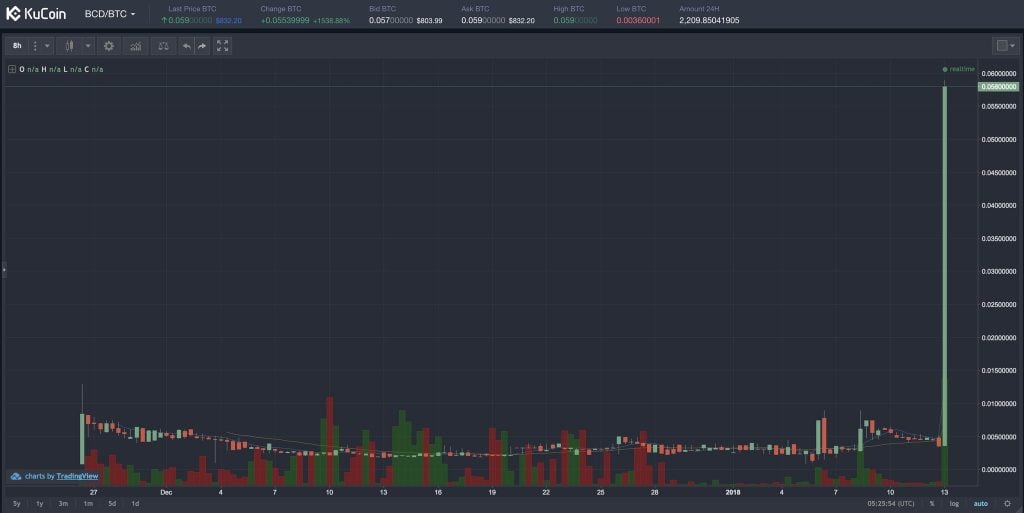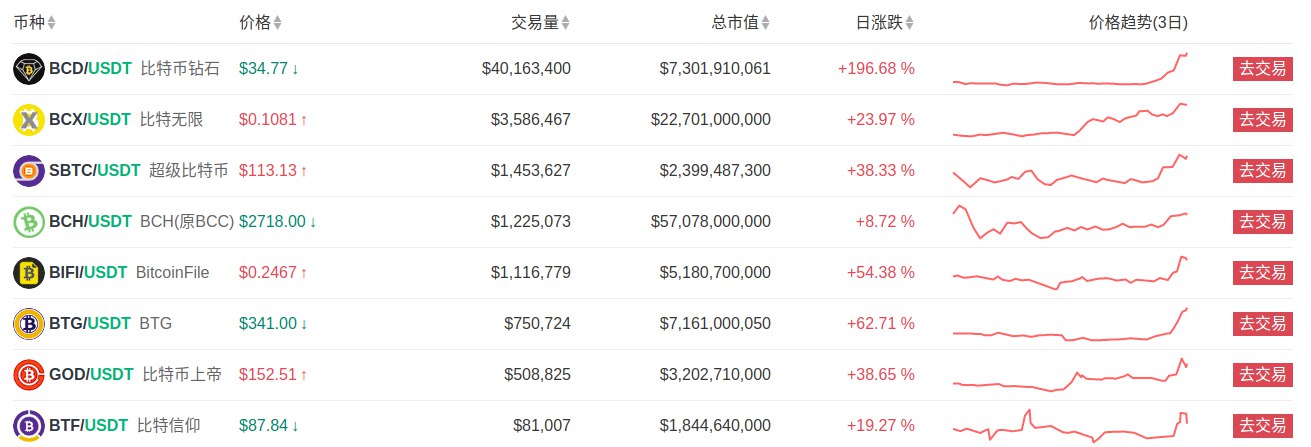The bitcoin community is, appropriately, split when it comes to forks. Some see these airdropped coins, which are issued to existing bitcoin holders, as an egalitarian distribution strategy that creates an instant user base and active community. Others aren’t so sure, questioning the motives behind these projects and the lack of infrastructure support.

Bitcoin diamond (BCD) was distributed at a BTC rate of 10:1 when it was released in late November. Within days, the forked coin had settled into a price bracket around the $30 mark, and with major exchanges such as Bitfinex and Bittrex refusing to touch it, diamond seemed destined to remain languishing in the doldrums. But in the trading stakes – or rather the pump and dump stakes – every coin has its day, and Saturday was BCD’s.
In a matter of minutes, the coin multiplied 40x on Kucoin, sending it over $800 and causing one of the largest green candles ever witnessed on an exchange. The movement prompted Kucoin to issue the following warning to its customers:

Night of the Long Forks
Starting on the evening of Friday January 12, traders went long on many of the bitcoin forks that have been created in recent months. Predictably, the action seemed to emanate from the Asian markets, before impacting on all global exchanges that supported the coins. Due to the low price of many of these coins – bitcoin file costs around $0.2 for example – coupled with low trading volume, orchestrating pumps is relatively easy.

For anyone who FOMOs hard and piles into these rising green candles, however, there is a high risk of failure. BCD’s meteoric movement was evidently an orchestrated P&D. Many traders, unaware of the pump and dump taking place, will have had sell orders set for bitcoin diamond. Once the scheme kicked in, eating through that resistance was a doddle.
The majority of forked coins have few real use cases, but the events of the past 24 hours may entice traders to set and forget their airdropped coins from now on. Given the meagre sums to be made from trading these coins at their regular price, it makes more sense to set an unrealistically high sell order, just in case the unthinkable happens.
Comments
Post a Comment